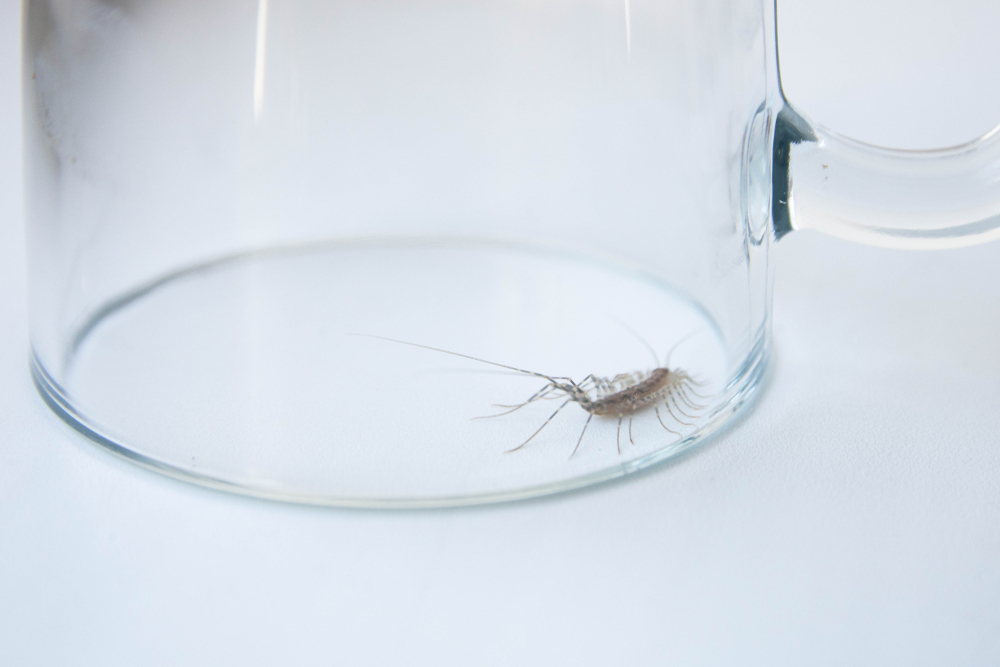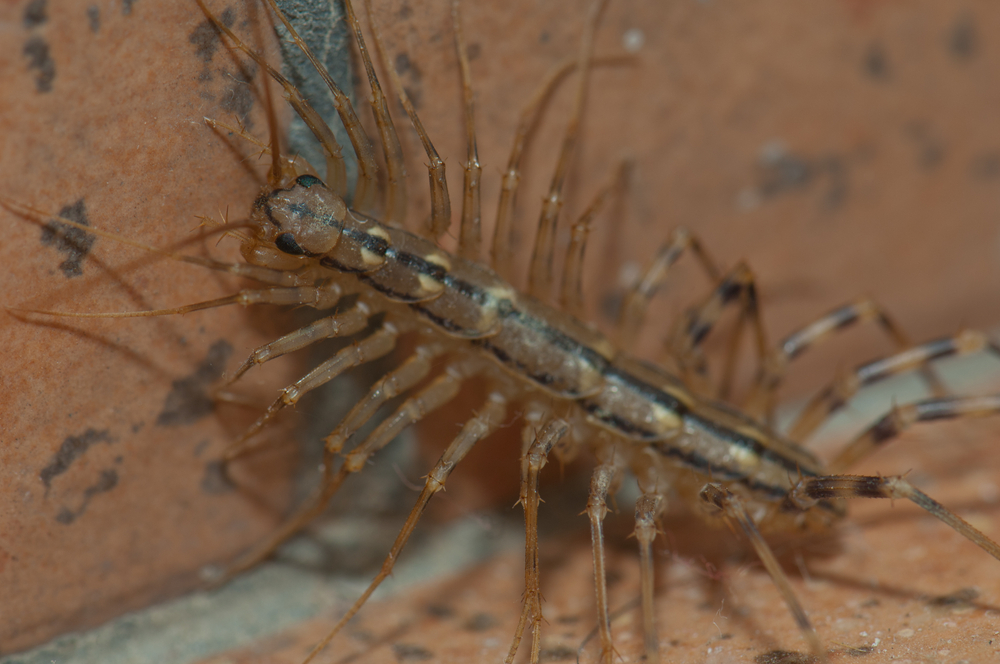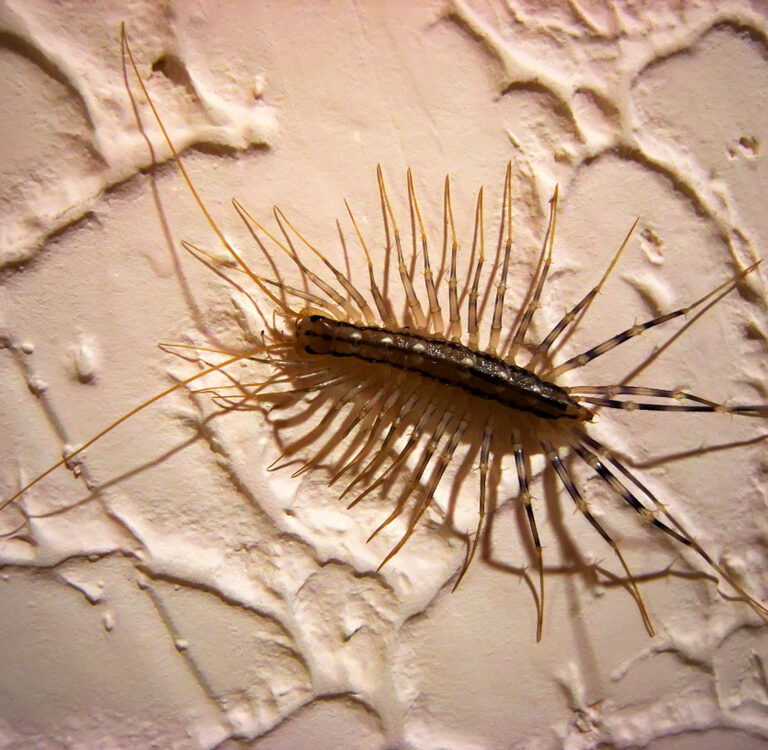Sorry about that picture. My editor made me do it.
Lots of people get creepy little centipedes crawling around their home. What usually attracts these centipedes into our homes is warmth, safety, and food. You see, in a way, centipedes are just the same as us, with the same basic needs, wants, and desires. Centipedes are basically just like humans. Big, long, disgusting humans, with a million nauseating legs…and claws.
Anyway, if you want to get rid of centipedes in your home, you have to consider two things: how to remove the ones you already have, and how to prevent more of the pests from coming in.
In this article, we’ve brought you information on how to do both, along with some facts, tips, hacks, and helpful product recommendations. Here’s how to get rid of centipedes…
How to Get Rid of Centipedes in Your Home

If you’re finding lots of centipedes in your home, you should try to deal with the infestation as soon as possible —you don’t want them breeding or sticking around. Here’s what you can do to get them out:
Play Catch
Centipedes don’t nest in big groups in the way that many other bugs do. Because of that, catching them one-by-one can help you to get a handle on them.
Use a glass and a piece of paper to catch any centipedes you see, then put them outside. While you can simply kill them, this should generally be avoided, as they’ll squish into a disgusting mess that can be difficult to clean up.
Don’t let centipedes touch your bare hands, as they can bite, but more on that later.
Set Some Traps
Insect traps are reliable and trusty, and they’ll catch centipedes easily without you having to chase them around your house like a maniac.Traps like this will get the job done. They’re not the most humane solution, but they’re a solution.
When setting your traps, place them in dark, dingy corners, on the floor —that’s where centipedes do all their hunting.
Go Hardcore
If the above solutions don’t work, consider getting some insecticide. You can either go for something non-toxic and eco-friendly, or a robust chemical-based solution if you have a serious infestation.
When you buy an insecticide, make sure you can use it indoors, and make sure it’s effective on centipedes. Also make sure to keep it away from your kids and pets (especially if your pets are centipedes).
Spray your insecticide in dark places where centipedes usually gather, and around all cracks, gaps, and small entry points.
If you don’t want to spend much money, you can make your own insecticide. It’s surprisingly easy. Grab some tea tree oil or peppermint oil (or a combination of the two), and mix around 30 drops of your oil with around 6oz of water, before spraying around all cracks and entry points.
Get a Professional
If none of the above is working, consider consulting a professional. They’ll absolutely be able to get rid of your centipedes, and will equip you with everything you need to stop them from ever infiltrating your home again.
It’s very unlikely that you’ll need to consult a professional, but it’s a reliable last resort.
How to Prevent and Deter Centipedes From Entering Your Home
No one wants their home to be party central for centipedes. But if you’re giving them the conditions they like, they’re gonna take advantage, and they’re gonna keep coming in.
To stop encouraging them, you need to make a few changes to your home:
Eliminate Their Food Sources
Centipedes like munching on the other household pests that infiltrate your home, including spiders, cockroaches, and other creepy creatures. They sometimes even eat other centipedes, because centipedes have no morals and no remorse.
Try to eliminate all other pests from your home —if there’s nothing for them to feed on, there’s way less chance that centipedes will want to enter your home. If you get rid of flies, silverfish, spiders and all other pests, you’ve made a good start.
If you cut off their food supply, the centipedes in your home will move somewhere where the food supply is more reliable and plentiful, like one of your neighbors’ houses. So don’t share this article with your neighbors. Or mine.
Eliminate Moisture
Most bugs like moisture, and centipedes are just like most bugs. If you can eliminate or minimize the damp, moisture, and humidity in your home, you’ll attract fewer centipedes, and fewer bugs generally (which also means you’re attracting less critters for centipedes to munch on).
Weirdly, centipedes actually need moisture to live. Without it, they dry up and die, so they’re not gonna hang around if there’s hardly any moisture in your home. Consider fitting exhaust fans in attics, bathrooms, and crawl spaces, and buy a good dehumidifier
If you have any particularly damp wardrobes, cupboards, or dressers, air them out and clean them up, as they can be secret little hideaways for all types of pesky pests.
Declutter
All bugs like lurking around in debris.
If you have less clutter, you have fewer hiding places —and if you have fewer hiding places, you’ll get fewer bugs. As much as possible, you should store things off the floor, and you should regularly sweep under your furniture.
Seal Your Cracks
Cracks in your walls, windows, doors, furniture and fixtures all offer places to hide out, get comfy, breed, and lay eggs. Get some expanding foam sealant spray, and use it to cover, block and fill all of these cracks.
Go Outdoors
Gardens and yards provide convenient mid-way points for bugs seeking a new home. Bugs will often venture into the safety of your garden and get comfy for a while before then moving indoors and making themselves properly at home.
You can avoid this by making your garden less hospitable. Get rid of leaves, clutter, and clippings, and keep your firewood and compost as far from your home as you can.
What Centipedes Look Like — How to Identify a Centipede

Sometimes, you might see what looks like a centipede before realizing it isn’t really a centipede.
So, here’s . It’s actually a little complicated, as there are various different types of centipede, and you might find many of them in your home.
But most of the time, if you have a centipede in your home, it’s (unsurprisingly) a “house centipede.” These guys have long legs, long tails and long antennae, and they make you feel sick when you look at them. House centipedes are greyish-yellow in color, and measure between 2.5cm and 5cm.
Centipedes can sometimes be a little hard to identify, as they move swiftly and they don’t like being looked at. But the good news is this: things that look like centipedes usually behave like centipedes. So even if the centipedes in your home aren’t really centipedes, your centipede-battling tactics will probably get rid of them anyway.
As the old saying goes, “if it looks like a centipede, you can probably deal with it like you’d deal with a centipede.”
(Yes, you’re right, I did make that up).
Can Centipedes Bite?
Yeah, they can. Most centipede bites don’t hurt, and they’re all pretty harmless. Centipedes do have venom, but it’s usually too weak to significantly affect us big, strong humans.
That said, if you get bitten by a particularly hefty centipede, it can hurt a lot. The swelling and pain can last for a while, and it can (very, very occasionally) progress into something pretty serious. So, avoid being bitten by big centipedes. There are lots of things you can do to treat centipede bites, but you should immediately:
- Apply heat as soon as you can, which can dilute the venom.
- Swallow some anti-inflammatory drugs to reduce and inhibit the swelling.
- Whack a topical antibiotic on top of the wound.
Again, even though this sounds scary, it’s probably not gonna happen —you’d need to have a centipede on your skin for it to actually bite, so just avoid picking them up with your bare hands.
Succeed Against the Centipede
There you are —all the centipede-battling tips, help, links, hacks and advice we have!
Hopefully you’re now equipped with everything you need to get rid of centipedes in your home. If you follow the advice and simple solutions above, you’ll be living in a centipede-free haven for the rest of your life.
